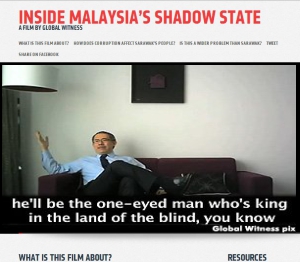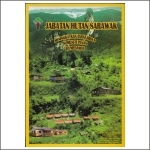Lynas’s plan to build an Acid-Cracking unit and Water Leaching Plant at Kalgoorlie, West Australia or WA, must not be delayed.
When I first proposed the removal of Lynas’s Acid-cracking unit and Water Leach Plant (ACWLP) to Australia for the final disposal of radioactive waste at its Mount Weld mine (Ring, 1993) in 2018, I expected it to be done quickly so that no more radioactive wastes would be produced in its Gebeng plant.
Finally, the government has imposed this measure as one of the conditions to extend Lynas’s permit of operation in 2019. Recently Lynas has been awarded the “lead agency” status, for which the WA state government will help expedite the approval process to build the plant in Kalgoorlie.
This is good news for Malaysia, because it will rid itself of about 200,000 tpa (tonne per annum, wet basis) of water leach purification (WLP) residue that contains significant amounts of radioactive materials, and 165,000 tpa wet basis of Flue Gas Desulfurisation (FGD) residue, and 99,344 Nm3/h of toxic flue gas. This will prevent further pollution of groundwater and the surrounding environment, and toxic pollutants from the gaseous discharge.
However, the existing stock pile of radioactive WLP and those produced over the next four years must be treated and stored properly, as advised by the IAEA. By then the 12-year tax holiday granted to Lynas will have expired, and it is hoped that Lynas will not just pack and move to another country, leaving behind all the radioactive and toxic wastes.
Four years is too long to transfer the ACWLP unit to Australia. Thus far, Lynas has not shown a good track record of corporate social or environmental responsibility over the last eight years, and it has done little to convince us of its commitment to its latest move.
The existing huge volume of Neutralisation Underflow (NUF) Residue, more than one million tonnes from an annual production of about half a million tpa (wet), must be treated and stored safely for final disposal.
Lynas may want to process its wastes in Gebeng into gypsum products, as claimed by its scientist, and export it to Australia for sales in its large market, instead of storing it as scheduled waste in Malaysia. Surely the by-product will also earn Lynas a significant amount of cash.
A study of 720 children living around Baotou rare earth plants in China has shown significant developmental defects caused by endemic fluoride poisoning, and the children’s intellectual ability is significantly impaired (Li, et al., 2008; Fan et al., 2004). Some studies of impacts of rare earth elements on health are equally damning, such as tumour development and growth (Schroeder, 1971; Zhang, et al, 2003; Zhang, et al, 2018).
There must be a comprehensive study of the impacts of Lynas’s operations on the health of the people and the environment, as required by its EIA monitoring procedure.
In future, all processing plants must remove all their radioactive wastes at source, instead of importing them to Malaysia. Otherwise, these industries will cause major, costly conflicts between companies and the public, as we are seeing with Lynas.
REFERENCES:
Fan, G., et al. (2004). Study on the effects of exposure to rare earth elements and health-responses in children aged 7-10 years. Wei Sheng Yan Jiu. 2004 Jan;33(1):23-8. PMID: 15098471
Li, Y. et al. (2008). Effects of Endemic Fluoride Poisoning on The Intellectual Development of Children in Baotou. Fluoride, 41(2)161–164, 2008.
Ring R. et al. (1993). Development of a Process for Recovery of Rare Earths from the Mt. Weld Orebody, XVIII International Mineral Processing Congress.
Schroeder, H, (1971). Scandium, Chromium (VI), Gallium, Yttrium, Rhodium, Palladium, Indium in Mice: Effects on Growth and Life Span. The Journal of Nutrition, Vol 101, 10- 1971, 1431–1437, https://doi.org/10.1093/jn/101.10.1431
Zhang, X, et al. (2018), Correlation of nasopharyngeal carcinoma with rare earth elements and the Epstein-Barr virus, https://doi.org/10.3892/ol.2018.7853.
Zhang, J, et al. (2003). Levels and distribution of 15 rare earth elements in tumor and normal lung tissue from the patients with lung cancer. Wei Sheng Yan Jiu. 2003 Sep;32(5):423-6. PMID: 14650179
Tan Ka Kheng
PhD (Cantab.), FIEM, Peng., FIChemE, CEng.
Chairman of Papan Suport Group and Advisor of Perak Anti-Radiation Committee. He was detained under the ISA during the infamous Operation Lalang, for campaigning for a clean and safe environment in Papan and Bukit Merah.






















Leave a comment